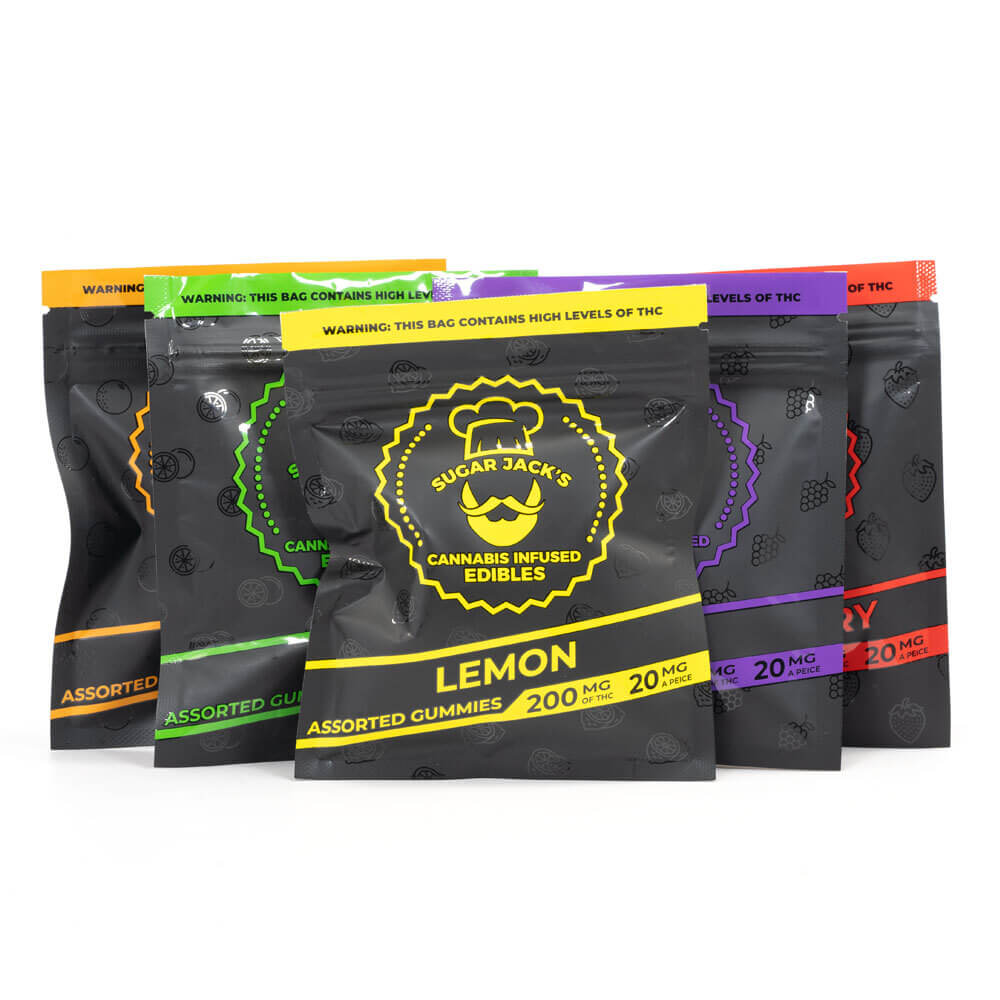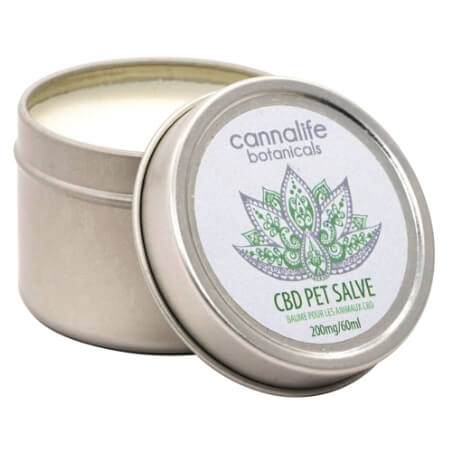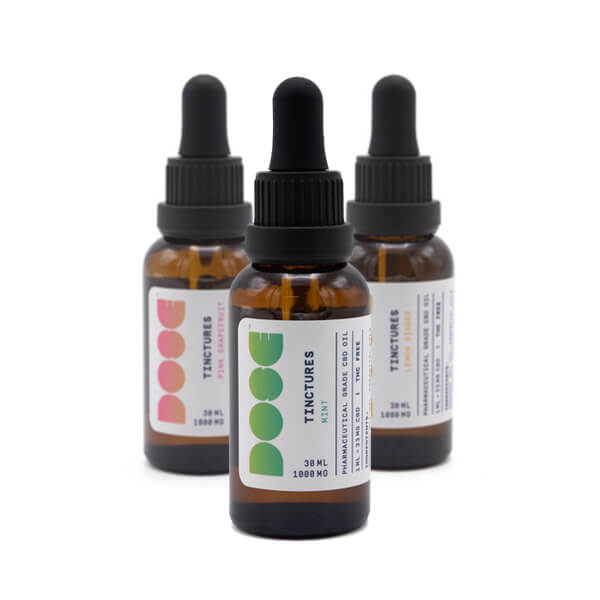No products in the cart.
Cannabis Tinctures – Everything You Need to Know
2 Sep 2019
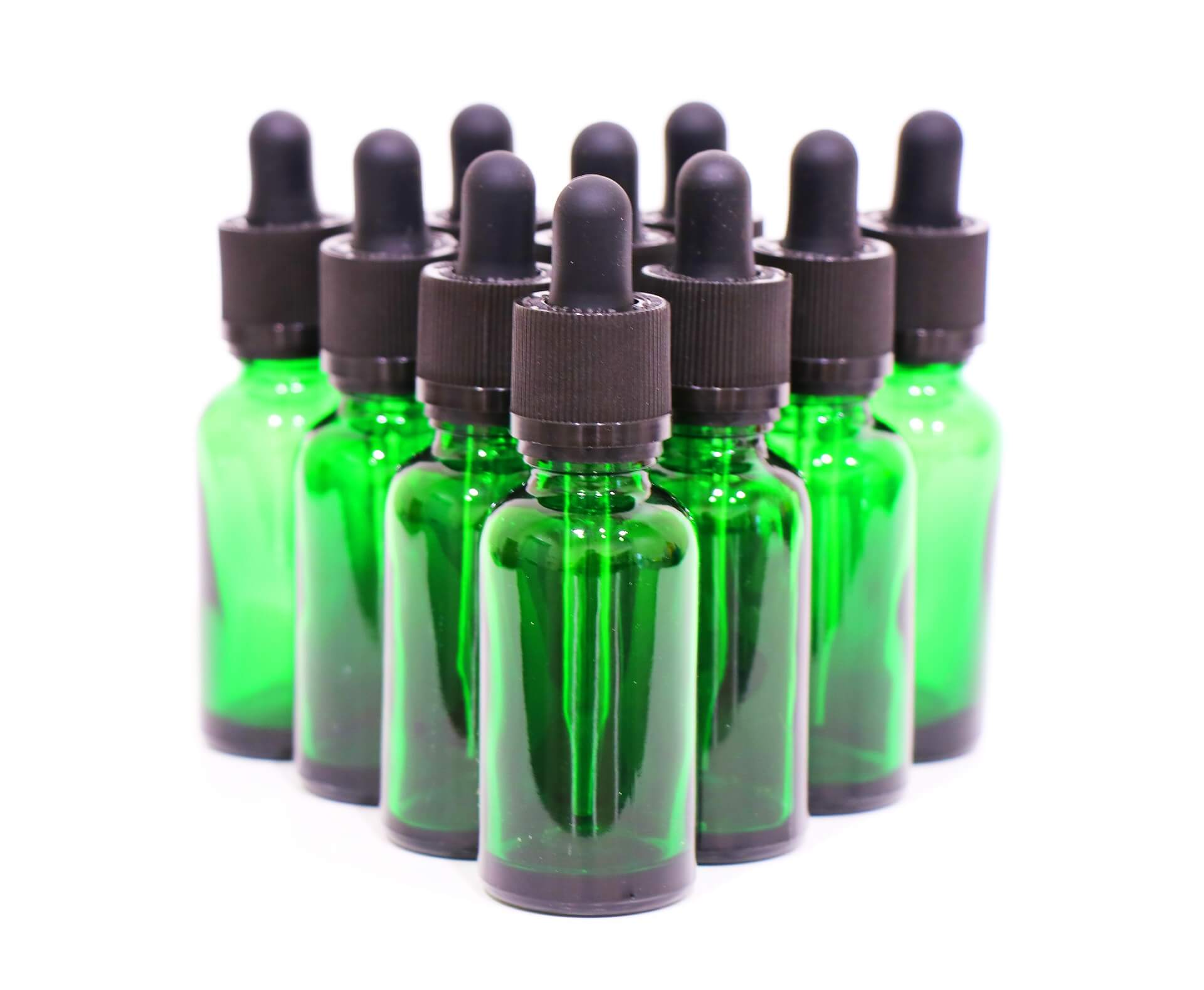
Cannabis tinctures are by far the least controversial method of consuming cannabis. Before the prohibition, tinctures were available in the US apothecaries as an officially acknowledged medicine. Today, they have received their second life — and for a good reason.
Why would you want to try a cannabis tincture? Because this form of cannabis is the most underrated of all the cannabis products.
You see, they have this reputation that there’s not much fun in using them, not to mention there aren’t many exciting ways to consume a cannabis tincture. But that doesn’t mean they’re somehow inferior.
For many people, though, weed tinctures often work better than every other cannabis format, including flowers, concentrates, pills, and gummies. There’s a long list of benefits to using cannabis tinctures and the actual efficacy depends on what you need your marijuana for.
If you’re looking for high medicinal value and unparalleled convenience, tinctures will be your best bet.
In this article, we cover everything there is to know about marijuana tinctures, including:
-
- The history of cannabis tinctures
-
- Chemical composition
-
- Benefits of cannabis tinctures
-
- The potential risks of using cannabis tinctures
-
- How to take a cannabis tincture
-
- What is the right dosage for your tinctures
- How to make cannabis tinctures at home
Are you ready to explore the world of cannabis tinctures with us?
In this section, we give you a detailed view of what cannabis tinctures are and how you can benefit from this user-friendly form of weed.
Let’s start with some background.
What is a Cannabis Tincture?
Tinctures are cannabis-infused extracts made with high-proof alcohol. They come in glass bottles with droppers, which makes them one of the best consumption methods for accurate dosing.
Soaking the herb in alcohol is done to extract cannabinoids like THC and CBD — along with the minor cannabinoids and terpenes — from the plant material. The cannabis used for extraction must be first decarboxylated (exposed to heat) in order to activate its ingredients. Otherwise, the medicine won’t be as strong as it could be.
Cannabis tinctures can be consumed orally or sublingually (under the tongue). Each of these methods has its pros and cons, but we’ll share more details later in the article.
Despite their obvious ease of use and dosing precision, tinctures are rarely talked about. This may sound particularly strange because prior to prohibition, a tincture was the most common form of medical marijuana in the United States.
The History of Cannabis Tinctures
Looking back at the history of cannabis, tinctures were listed in the United States Pharmacopeia until 1942 (UK 1970s, Australia 1977). People used it for an array of medical conditions, from pain to sleep difficulties to severe inflammation.
In the 20th century, cannabis began to lose its appeal as a medicine, largely due to the development of synthetic hypnotics and water-soluble analgesics produced by pharmaceutical companies.
A major concern for the federal government at that time was the rising popularity of the recreational use of cannabis. With the prohibition rolling like a snowball across the United States, cannabis tinctures were forgotten for almost 50 years until the discovery of the endocannabinoid system in the 1980s.
Since then, the interest in tinctures has been steadily increasing, although they gave the front seat to other, more “enjoyable” consumption methods.
How are Weed Tinctures Made?
The process of making a cannabis tincture is very simple. It’s very much like dissolving sugar in water. The solids break down in the liquid, giving their active compounds into the alcohol-based solution.
Interestingly, the same procedure applies when making marijuana tinctures. The alcohol pulls all the chemicals from the cannabis flowers (trichomes, cannabinoids, terpenes, and flavonoids). Those compounds are then infused into a liquid and can be administered under the tongue or mixed with food and drinks.
The interesting thing about cannabis tinctures is that they gain potency over time. If you store the tincture on your shelves out of sunlight for a couple of months, it will become stronger.
Under the right conditions, this process can be speeded up by placing the alcohol-cannabis solution over very low heat until some of the alcohol evaporates from the mixture. However, this method is not suitable for making tinctures at home due to the risk of explosion.
The Benefits of Cannabis Tinctures

Buying (or making) a cannabis tincture offers a long list of health benefits, as well as some practical perks. To give you an idea of how versatile cannabis tinctures are, here are a few positive effects you can enjoy when you take a THC or CBD tincture:
-
- Tinctures have a fast onset time (when taking tinctures sublingually, you feel the effects faster than any other form of the herb)
-
- They give you precise control over the dosage
-
- Tinctures are discreet
-
- They have a long shelf life
- These extracts are safe
Cannabis tinctures can be sourced from both high-THC and high-CBD flowers. Each of these compounds carries different benefits for medical and recreational users, but generally speaking, a cannabis tincture can relieve the following symptoms and conditions:
-
- Mood swings
- Lack of appetite
-
- Nausea and vomiting
-
- High blood sugar
-
- Insulin resistance
-
- Inflammation
-
- Chronic pain
-
- Bone Degeneration
-
- Convulsions
-
- Seizures
-
- Muscle cramps
-
- Cancer cell growth
- Neurodegenerative disorders
When you pair the above benefits with the fast-acting nature of the tincture, you’ve got a potent medicine for a wide range of serious symptoms.
Now, let’s get down to the practical part of using cannabis tinctures.
How to Take a Cannabis Tincture
The ease of use is one of the main benefits of a tincture. The solution is squeezed out through an eyedropper syringe beneath the tongue. Once there, the sublingual gland absorbs it right into the bloodstream within 30–90 seconds.
This helps the user avoid the so-called “first pass effect” that occurs during oral consumption. When consumed orally, THC and other cannabinoids have to be processed by the liver before they become available for the body — this significantly reduces the bioavailability of oral products. It also extends the time it takes to take effect.
When taking a THC dominant tincture, you need to wait for about 15–20 minutes before feeling the effects. This form of consumption also allows you to use smaller doses of the product to feel the difference than you would need with pot edibles like brownies.
Nevertheless, if you don’t like the distinct taste of a cannabis tincture and it’s not a problem for you to wait a little bit more for the THC to kick in, you can mix the tincture into food and drinks. Tinctures are highly versatile and can be added to sauces, salad dressings, or baked goods to spice up your next cooking session. For those that do not want to ingest alcohol, the tincture may be heated up as in a cup of tea or hot cocoa to burn off the alcohol.
How to Dose Your Tinctures
As with any product you’re about to introduce to your body, it’s best to start with baby steps. This approach will help you avoid getting the uncomfortable distress caused by overly high doses of THC.
On the other hand, if you can’t feel any effects because the dose is too low, you still have some room for adjustments.
If you’re new to cannabis consumption, we recommend starting with two or three drops at a time. Those particularly cautious about dosing cannabis products can start with two drops or less.
After an hour and a half, the effects should peak, giving you enough time to judge if your starting dose impacted your body and mind. If not, you can increase the dosage by another drop or two until you reach the sweet spot.
Are There Any Side Effects of Cannabis Tinctures?
Cannabis tinctures high in THC are safe for consumption as long as you don’t try to impress your friends by taking a spoonful at one time.
However, it may happen that you’ll accidentally exceed your recommended dosage.
What are the side effects of a high-THC tincture when you go overboard?
The most common ones include dry mouth and dry, red eyes. These side effects, however, are typical of all cannabis products, even those derived from hemp (hemp contains less than 0.3% THC).
Dry mouth can be easily conquered if you hydrate yourself frequently. Remember to drink some water prior, during, and after taking your cannabis tincture.
Red eyes are more common in marijuana users, as they result from the THC’s ability to lower blood pressure by dilating ocular capillaries, which results in increased blood flow, hence the bloodshot eye effect.
If you have a low tolerance to THC, or you’re just getting started with cannabis, chances are you might experience anxiety or mild paranoia. Fortunately, this mental distress doesn’t last long and if you take a couple of deep breaths, talk to your friends about how you feel, or take a nap when you feel overwhelmed, you should be up and about again pretty fast.
CBD tinctures, on the other hand, are non-psychoactive and thus cannot make you feel high. Therefore, the worst that can happen to you when you take too much CBD is a little dizziness and lightheadedness caused by the lowered blood pressure.
How to Make Cannabis Tinctures in 5 Steps
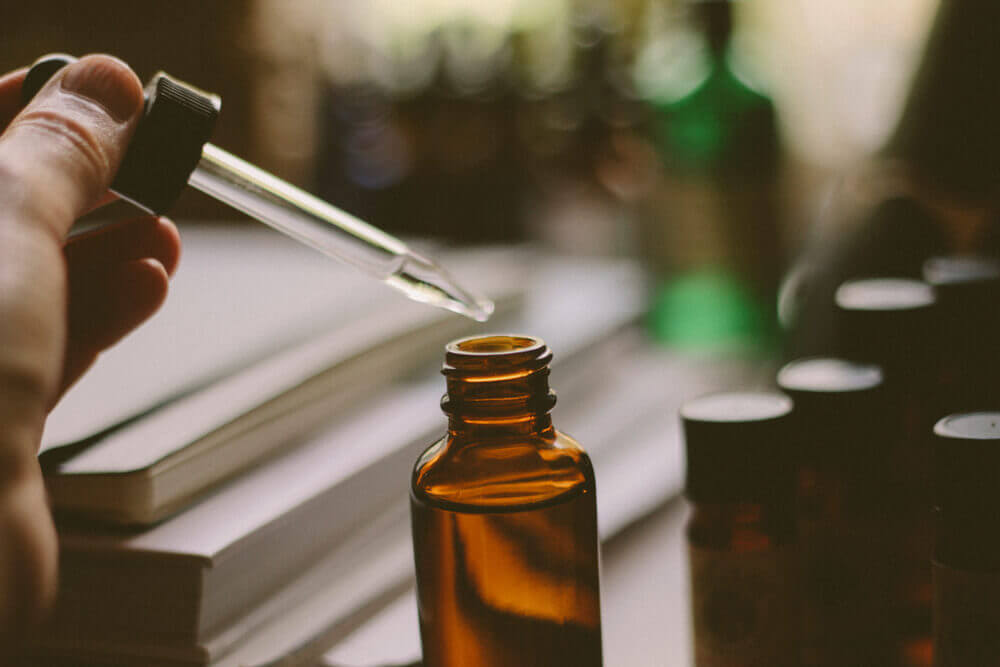
To make a DIY cannabis tincture, you’ll need the highest percentage of alcohol you can get. The potency of the end product will depend on the amount and quality of the cannabis you use, so make sure you only get the top-notch flowers for this process.
Here’s what you need to make a cannabis tincture:
Ingredients:
-
- ½ oz of high-quality cannabis flowers
- High-proof alcohol (e.g. Everclear)
Equipment:
-
- Oven-safe pan
-
- Aluminum foil
-
- Cheesecloth
-
- Mason jar
-
- Glass dropper bottles
-
- Glass measuring cup
- Gloves
STEP 1: Decarboxylation
Before making your cannabis tincture, you’ll need decarboxylated weed. The best temperature for decarboxylation is around 230 degrees Fahrenheit, with 110 minutes in the oven.
First, break your cannabis down into smaller pieces (by hand or using a grinder) and spread it over on the oven-safe pan. Cover the pan with a sheet of aluminum foil to avoid burning the weed.
As mentioned, bake in the preheated oven for 110 minutes.
STEP 2: Prep Work
Grab the mason jar and put in your decarboxylated cannabis. Pour the alcohol until the cannabis is completely soaked and seal it tightly with the lid.
STEP 3: Perfecting the Tincture
According to experienced cannabis users, it’s best to freeze the jar full of alcohol and cannabis for up to two weeks and take it out once a day to shake. The cold will help keep more of the redundant plant matter like chlorophyll from the end product.
STEP 4: Straining Time
You’ll need to strain the tincture through a cheesecloth into the measuring cup. Once the liquid stops dripping through the cheesecloth, squeeze it with your hands but make sure to wear gloves for this step. You can use a coffee filter for the job if you don’t have the cheesecloth.
STEP 5: Storage
Once extracted and bottled, your tincture must be stored properly in order to maintain long shelf life and not lose potency. We suggest that you keep the tincture in a cool and dark environment. Air, heat, and light can negatively impact the quality of cannabis tinctures.
A Final Word on Cannabis Tinctures
Cannabis tinctures offer a simple and discreet solution for cannabis users who like to remain low-key with their medication. On top of that, a weed tincture allows you to receive the health benefits of the herb without having to smoke it.
While tinctures aren’t the most exciting form of cannabis consumption, making your own herbal extract is fun beyond any doubt. It only takes a few ingredients and basic kitchen equipment to make cannabis tinctures at home for all self-sufficient consumers. Then you have a long-lasting, potent, and versatile home remedy.
If you prefer the pragmatic approach to taking cannabis, tinctures will be your best bet. Just place a few drops beneath the tongue with a convenient dropper, wait for around a minute for the product to absorb, and give it around 30 minutes to start working.
Do you have any experience with cannabis tinctures? What do you like about this form of weed?
Have you ever made your own tincture at home?
Let us know in the comments below — we’d love to hear your stories!




